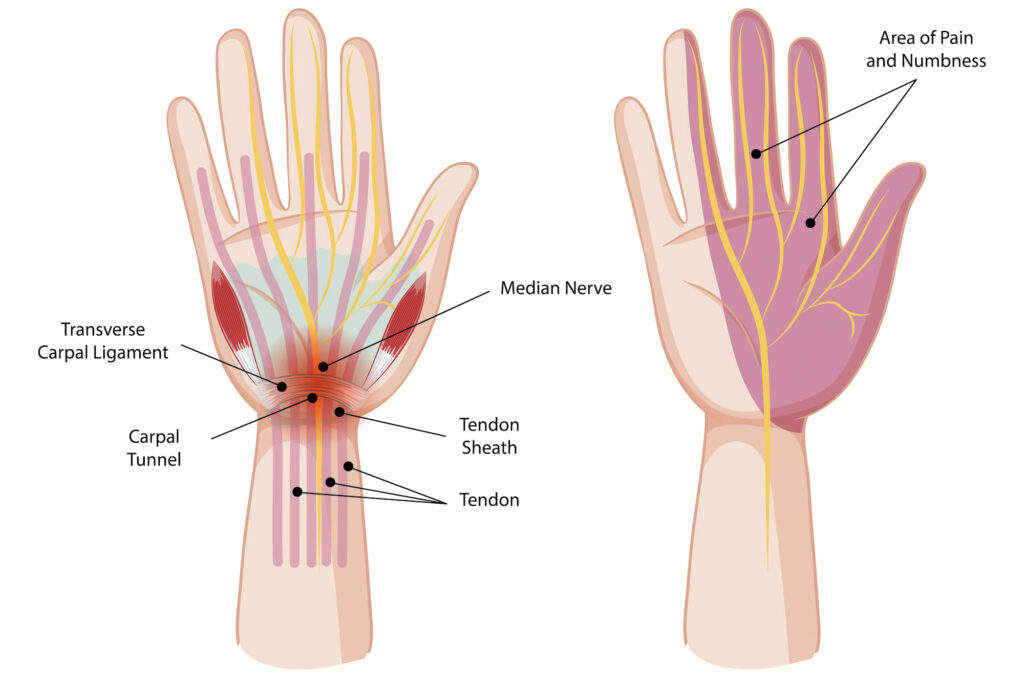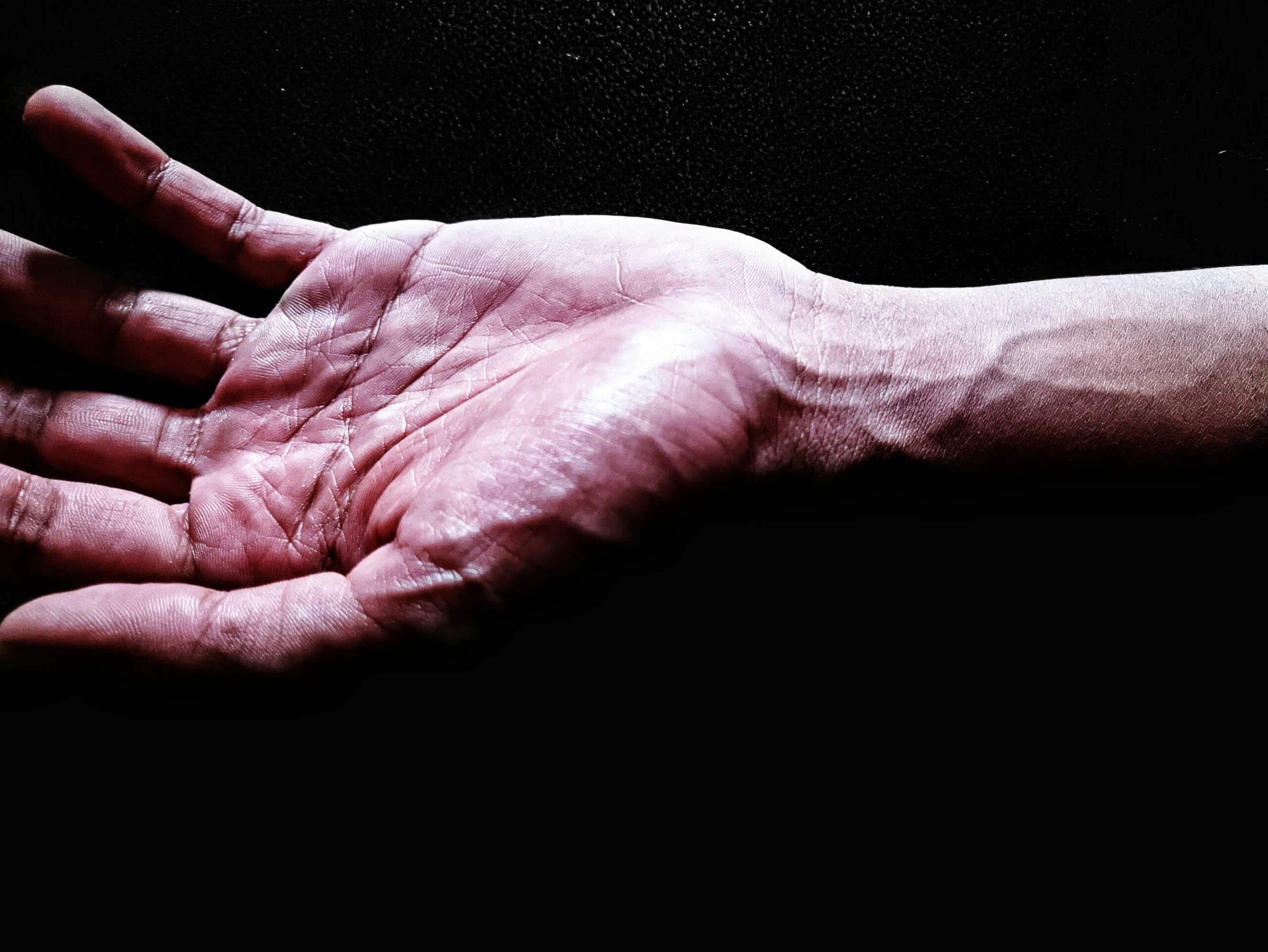The carpal tunnel is a number of bones and ligaments that create a narrow passageway on the palm side of your hand. The median nerve passes through it and controls sensation in the thumb, index, middle, and some of the ring finger. When the nerve becomes compressed, it can lead to symptoms like tingling, numbness, and weakness in the hand and fingers.
What causes Carpal Tunnel Syndrome?
- Repetitive wrist movements, like typing, assembly line work, or using hand tools
- Conditions like rheumatoid arthritis, diabetes, and hypothyroidism can contribute to swelling or inflammation in the carpal tunnel
- Fractures or dislocations that narrow the carpal tunnel, thus irritating the nerve
- Hormonal changes, often during pregnancy, that can lead to swelling in the wrist
- Some individuals have a naturally smaller carpal tunnel, making them more prone to compression of the median nerve
What symptoms would I notice?
- Tingling and numbness in all fingers besides the little finger
- A sensation that may feel like an electric shock through the fingers and often occurs when holding objects or during the night
- You might notice difficulty gripping objects or dropping things due to weakness in the thumb muscles
- Pain radiating from the wrist up the arm, especially with prolonged use of the hand
- Many people experience symptoms at night, waking up with tingling or numbness in their fingers

How is Carpal Tunnel Syndrome diagnosed?
Your GP will examine your hand for signs of weakness, numbness, or tingling. They may also perform specific tests, such as:
- Phalen’s test: Flexing the wrist to see if it triggers symptoms.
- Tinel’s sign: Lightly tapping the median nerve at the wrist to check for tingling or electric shock-like sensations.
X-rays may be required to rule out other conditions, such as fractures or arthritis. An ultrasound (US) can show flattening of the nerve as well. In some cases, where the cause of symptoms is unclear, electromyography (EMG) or a Nerve Conduction Study (NCS) might be used to assess nerve function. This involves small needles being placed in the muscles of the forearm and hand to check if the electrical signals are being sent along the nerve properly. This test is normally undertaken at a neurologist’s practice (nerve specialist).
Treatment options
Non-operative treatments are always the first option for Carpal Tunnel Syndrome, with surgery as a secondary plan of action depending on the severity of the symptoms. Conservative treatments can significantly improve symptoms, especially if CTS is diagnosed early.
Read the below guide from the NHS (UK) if you would like some evidence-based support in deciding about your treatment:
Non-operative treatments
- Taking frequent breaks when doing repetitive activities can help reduce strain on the wrist
- Icing the wrist can help reduce swelling and alleviate discomfort
- Wearing a splint at night to keep the wrist in a neutral position
- Medications to manage pain and inflammation
- An injection into the carpal tunnel can reduce swelling and inflammation, relieving pain and discomfort
Operative Treatment
Carpal Tunnel Release is the primary surgical option, which involves cutting the ligament that forms the roof of the carpal tunnel to make more space for the median nerve. The procedure is most commonly performed through an open incision, however other techniques include the use of a camera and small knife or use of an ultrasound and a specialised cutting needle.
While the majority of patients experience significant relief after surgery, some may continue to experience mild numbness or weakness. In most cases, these symptoms resolve over time, but in a small number of cases, some symptoms may persist.
To read more about carpal tunnel release and recovery see below:
Carpal Tunnel Release Surgery with Dr Lambers
If your GP deems surgery worth considering, Dr Lambers’ expertise in Carpal Tunnel Release procedures helps restore your hand function with minimal disruption to your daily life. After surgery, he will guide you through rehabilitation to regain strength and full range of motion in your hand.

